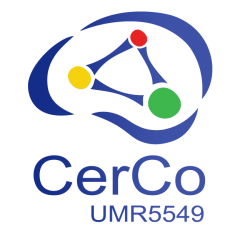Responsable : Timothée Masquelier
Notre nouvelle équipe incarne la pollinisation croisée entre les neurosciences et l’intelligence artificielle (IA).
– Nous utilisons des méthodes d’IA de pointe pour traiter efficacement les questions de neuroscience en suspens. Par exemple, des outils d’apprentissage en profondeur sont utilisés pour trouver des modèles dans de grandes quantités de données d’IRMf et d’EEG, et pour les relier aux stimuli, à la cognition, au comportement et au bien-être.
– Nous utilisons notre connaissance du cerveau pour concevoir des algorithmes d’IA améliorés et des architectures de réseaux neuronaux artificiels, par exemple en incorporant des pics, des rétroactions, des oscillations ou des représentations plus proches de l’homme.
Mots-clés
Intelligence artificielle, apprentissage machine, apprentissage profond, réseaux de neurones, neuroscience computationnelle, vision, audition, traitement du langage naturel.
Chercheurs
Chercheur associé
Ingénieurs
Leslie MARIE-LOUISE
Raja KUMAR
Post-Doctorants
Antoine GRIMALDI
Nicolas KUSKE
Mitja NIKOLAUS
Jacob SCHWENK
Doctorants
Jan Erik BELLINGRATH
Roland BERTIN-JOHANNET
Tomas DE UDAETA
Thomas FEL
Ilyass HAMMOUAMRI
Jean-Felix MAESTRATI
Leopold MAYTIE
Sabine MUZELLEC
Martina PASQUALETTI
Romain PIERRE
Ulysse RANCON
Publications Représentatives
- Hammouamri I, Khalfaoui-Hassani I, Masquelier T (2024) Learning Delays in Spiking Neural Networks using Dilated Convolutions with Learnable Spacings. In: ICLR, pp 1–12 Available at: https://openreview.net/forum?id=4r2ybzJnmN.
- Alamia, A., Gordillo, D., Chkonia, E., Roinishvili, M., Cappe, C., & Herzog, M. H. (2024) Oscillatory traveling waves provide evidence for predictive coding abnormalities in schizophrenia. Biological Psychiatry.
- Ahuja, N.Y. Rodriguez, A.K. Ashok, T. Serre, T. Desrochers, D. Sheinberg (2024) Monkeys engage in visual simulation to solve complex problems. Current Biology.
- Linsley, I.F. Rodriguez, T. Fel, M. Arcaro, S. Sharma, M. Livingstone & T. Serre (2024) Performance-optimized deep neural networks are evolving into worse models of inferotemporal visual cortex. Neural Information Processing Systems.
- Alamia, A., Terral, L., D’ambra, M. R., & VanRullen, R. (2023). Distinct roles of forward and backward alpha-band waves in spatial visual attention. Elife, 12, e85035.
- Boutin, V., Fel, T., Singhal, L., Mukherji, R., Nagaraj, A., Colin, J., & Serre, T. (2023). Diffusion models as artists: are we closing the gap between humans and machines?. In Proceedings of the 40th International Conference on Machine Learning (pp. 2953-3002). https://arxiv.org/pdf/2301.11722
- Fang W, Chen Y, Ding J, Yu Z, Masquelier T, Chen D, Huang L, Zhou H, Li G, Tian Y (2023) SpikingJelly: An open-source machine learning infrastructure platform for spike-based intelligence. Sci Adv 9 Available at: https://www.science.org/doi/10.1126/sciadv.adi1480.
- Thomas, Fel, Boutin, V., Béthune, L., Cadene, R., Moayeri, M., Andéol, L., … & Serre, T. (2023) A Holistic Approach to Unifying Automatic Concept Extraction and Concept Importance Estimation. In Thirty-seventh Conference on Neural Information Processing Systems. https://arxiv.org/pdf/2306.07304
- Ozcelik, F., & VanRullen, R. (2023). Brain Diffuser: Natural scene reconstruction from fMRI signals using generative latent diffusion. Scientific Reports, 13(1), 15666.
- Truong, M. A. Khalid and A. Delorme (2023) « Deep learning applied to EEG data with different montages using spatial attention, » 2023 IEEE International Conference on Bioinformatics and Biomedicine (BIBM), Istanbul, Turkiye, 2023, pp. 2587-2593, doi: 10.1109/BIBM58861.2023.10385525. https://ieeexplore.ieee.org/document/10385525
- VanRullen, R., & Kanai, R. (2021). Deep learning and the global workspace theory. Trends in Neurosciences, 44(9), 692-704.
- Truong, D., Milham, M., Makeig, S., Delorme A. (2021) Deep Convolutional Neural Network Applied to Electroencephalography: Raw Data vs Spectral Features. 2021 43rd Annual International Conference of the IEEE Engineering in Medicine & Biology Society (EMBC), 2021, pp. 1039-1042, doi: 10.1109/EMBC46164.2021.9630708. IEEE website. arxiv preprint.
